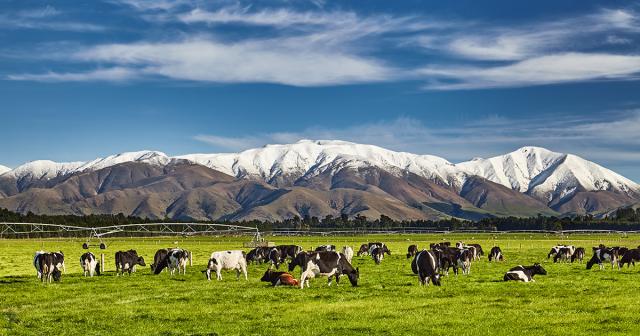The management of feed deficits and surpluses was the focus of a recent Beef + Lamb New Zealand North Canterbury Farming for Profit workshop at the Greta Valley tavern.

Local farmers and farm consultant Gary Walton shared their experiences of managing feed throughout the year to optimise livestock performance and profit.
Walton set the scene by saying feed management was essentially farming; farmers needed to grow and manage feed to make money and strike the right balance between stocking rates and feed supply and demand.
“As you increase stocking rates you can make more money to a point and then it starts to plummet.”
Walton outlined the many tools farmers had available to measure and manage feed. These included sward sticks, rising plate meters, cut-cages, silage wagons while FeedSmart and FarmIQ and a range of other hard copy and on-line resources could help farmers calculate their livestock’s feed requirements at different times of the year.
Managing feed surpluses
Faced with a feed surplus, farmers need to consider whether it is a short or long-term issue and then make a plan to deal with it.
Factors to consider include stock numbers, stock classes, deferred grazing, trading stock, supplementary feed, or feeding capital stock better.
Feed deficits
Again, it is important to make a plan and consider the options. These could include selling stock, off-farm grazing, and buying in feed.
Early decision making was critical when dealing with feed deficits.
With droughts, no-one knows how long they will last, and Walton predicts that long-term droughts (of around four years) would become more common in a changing climate.
“Prioritise stock classes and talk to people, get help or advice. Set key decision dates, so if it hasn’t rained by this date you are going to take a specific action.”
Other factors to consider include how widespread the drought is, the availability and cost of bought-in feed and the availability and cost of off-farm grazing or leasing land.
Another option to consider is share farming, where graziers share in the profits.
Trading stock
While trading stock offer a high degree of flexibility, changing a farm system to focus on trading stock could bring its own set of challenges.
“Stick with what you’re good at and what works for your farm.”
Early decision making critical
Whether dealing with feed surpluses or deficits, early decision making was critical. Walton encouraged farmers to read the signs, such as soil moisture levels and long-term weather forecasts, and take a punt as to what they think what will happen.
“If you make the wrong decision, you can always make another one.”
Farmer experiences
North Canterbury farmers Jim Burrows, Rob Stocks and James Forbes shared their experiences of managing feed on their sheep and beef properties.
Jim Burrows has already put together a detailed feed budget for winter 2026 and James Forbes also uses a comprehensive feed budget to ensure they have enough feed for the 5000 stock units they winter.
Rob Stokes, who farms predominantly cattle on an extensive property in the challenging climate of the Lees Valley, says they start planning for winter at the end of January.
“We need to get that right.”
Jim says going into winter, they cut and measure their winter feed crops (fodder beet, Raphno, cereals) and adjust their feed budget according. They budget on running sheep on crops for 50 days and cattle for 110 days.
They have flexibility in their system with a big trading component. This includes trading lambs and dry cows while dairy cows generate cash flow.
“We find the best class is a 40kg lamb because they are really flexible.”
They have a philosophy of running fewer stock but doing them well, and this includes ewes which need to be scanning 200% and weaning 37kg lambs.
James grows fodder beet, kale and short-term ryegrasses for winter and uses these for winter trading lambs, dairy cows and dairy heifers.
Rob says they run a conservative stocking rate and will sell lambs as store if the spring is looking dry. In dry years, they use shaded gullies to provide feed for cows and these are an important part of their farm operation.
The Stokes family also have an irrigated block of land in Oxford which gives them the ability to finish stock.
Jim urged farmers to think about the cost of feed when putting together a feed budget.
“We all have calculators so use them.”
“It’s so expensive to make baleage, hay for example, is cheaper to make and lasts longer than baleage.”
He also believed it was important to understand the markets for both stock and feed and to get on the phone and talk to people about stock and feed availability.
James says they have a lot of levers they can pull in their farm system and their plans are consistently evolving.
He encouraged farmers to understand the true cost of feed including the costs associated with feeding it out.